Botanical Illustration: Sketchbook study of Broom
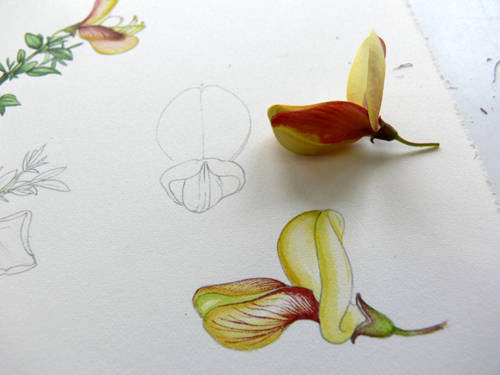
As a natural history illustrator, I never know what species of plant or animal I’ll be called on to paint next. A good way to try and stay ahead of the game is to complete (copious) sketchbooks for lots of species. Each plant has a sketchbook study and written notes on colour, shape, and plant habit recorded. Sometimes I even attach parts of the plant to the page, which can be useful when looking at leaf venation.
Sketchbook Study
I have found the perfect sketchbook to work on, namely the RKB Fat Pad. Fabriano classico paper, spiral bound in various sizes (an A4 one for the studio, a smaller one for field studies). The cover is tough, the paper is perfect, and I am a complete convert. I use these for all my sketchbook study illustrations.
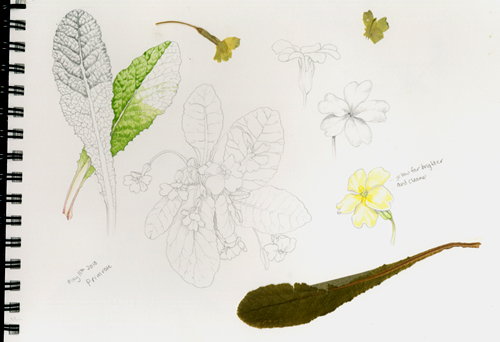
What to include in a Sketchbook study
For each plant I record I try to get a few essentials down; a habit drawing (one which shows the shape of the whole plant, or a large part of it), a detailed flower in colour, flowers from several angles (not necessarily in colour), details of several leaves (at least one in colour), a cololur sample of the stem and calyx/ sepals etc., and information on sizes and on any fruting bodies or seeds. The nice thing about keeping these sketchbooks is you can add to them. If you see a particulalry interesting form of a flower, or want to paint a nut or seed long after the flower is dead, then you can return and add them to the page.
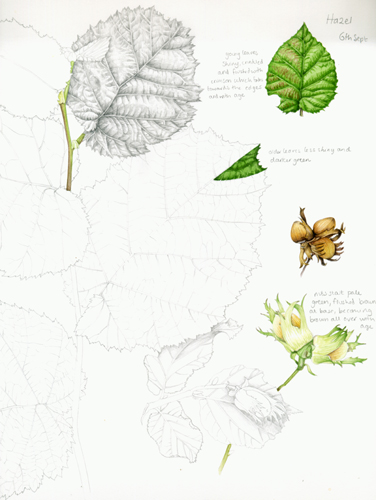
Sketchbook study of the Broom Cystisus scoparius lena
Right now, I’m at a loss as to which plant to paint first. There are loads of species I need to record in my sketchbook, and they all seem to be rushing past their best before I can get to them. One that I need reference for is a broom cultivar, Cystisus scoparius lena, and the flowers are withering, so I decided to paint it today.
Step 1: Pencil rough
First step is to draw the plant in pencil (I use mechanical pencils, pentel P205s with 0.5mm leads are good). The hardest part is holding the specimen still in one hand as you draw it, inevitably you change its angle or the flowers begin to wilt!
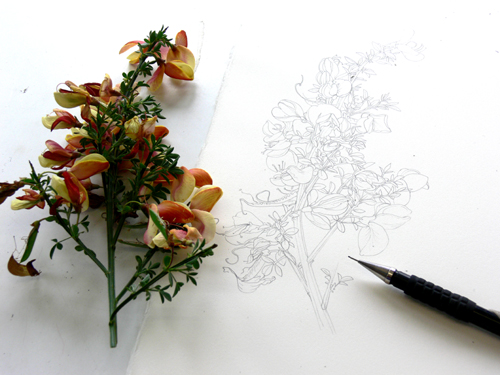
Step 2: Leaves and stems
Next I decide what part of the plant I want to use colour on. In this case, the top sprigs of leaves looked tempting. First step is to plot in the darkest greens. This is a mix of sap green, cereulean blue, and yellow ochre (I tend to favour winsor and newton watercolours, and am passionate about winsor and newton series 7 brushes. My current favourite is a no. 1).
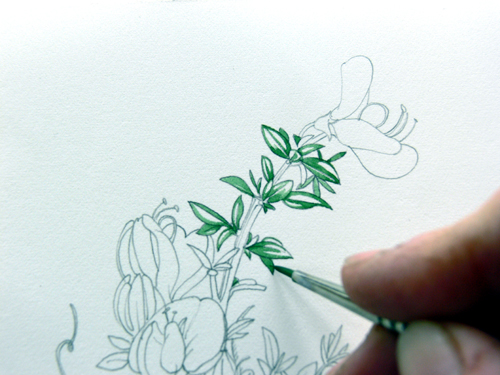
Next, I go over the greens with a paler wash of the same colour, with a little yelow ochre added. This softens the tone and adds body to the rest of each leaf.
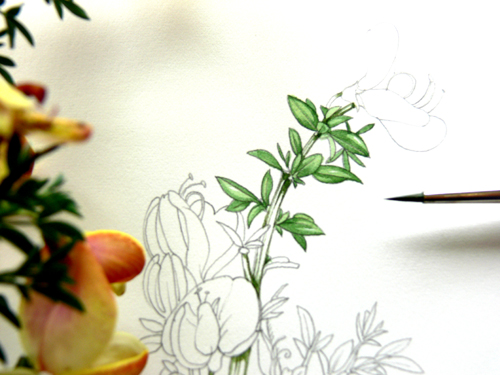
Step 3: Painting the flowers
After plotting in the darkest areas of the leaves (where they overlap and cast shadows, and at the tips and midribs) I start on the petals. Often the most concentrated colour in a petal is at the edges, so this is where I begin. The yellows here are cadmium yellow dark and a touch of lemon yellow.
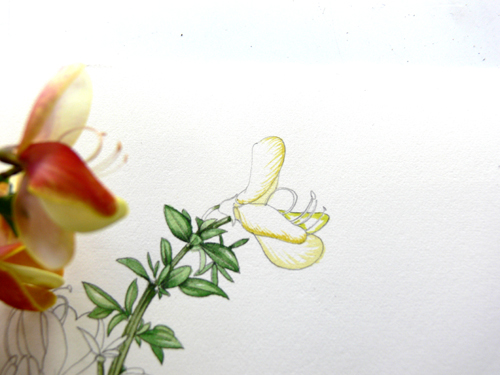
Using the same technique as before, I soften the dark areas with a watered down verison of the same yellow, being sure to leave the pale areas white. This helps brighten the yellow, brinigng it to life and making it more luminous. I also pop in the detail of the anthers, stamens and pistil. I really love the shape of these parts on the broom flower.
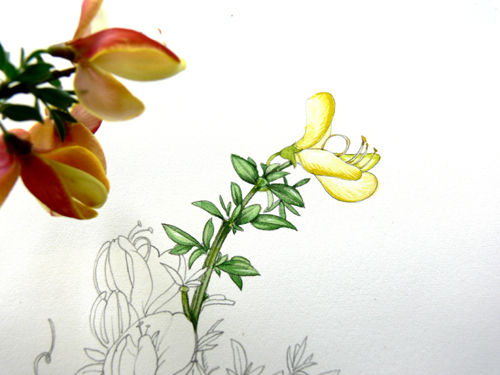
Next comes the fun bit, putting in the red veins and working into the brick-red flush on the lower petals. This colour took some mixing, I kept making it too orange or too pink. Finally I settled on a mix of alizarin crimson, vandyke brown, and a touch of cadmium orange.

Again, using a diluted version of the red I put a soft wash on top of the flower veins, pulling the paint to the paler central areas and trying to keep it light.

To bolden up the red, I worked further into it with a concentrated mix of the alizarin crimson and vandyke brown. I also used a very dilute yellow to plot in other flowers. I often do this to help clarify the plant; atonal pencil is a lovely medium but a wash of colour can make things much clearer.
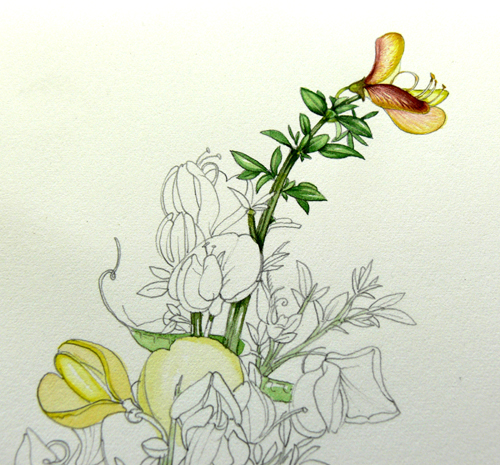
I then colour in some further flowers so I know what the blooms look like from different angles, then pop in the stem colour (and continue it through the image. This helps to make the structure of the plant clear and helps compositionaly too). I also make sure to do a swift study of the seed pods as they attach to the stem (sap green with lemon yellow, far brighter than the leaves and stem).
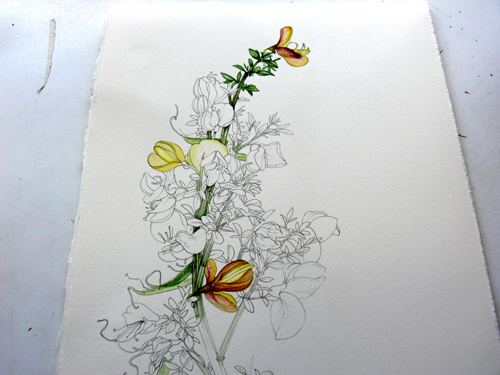
Adding details to the Sketchbook study
Then it’s time for the details, which I do separately form the main plant. One flower from a couple of angles, again with the same technique and palette as before.

And here it is with both flower studies complete:
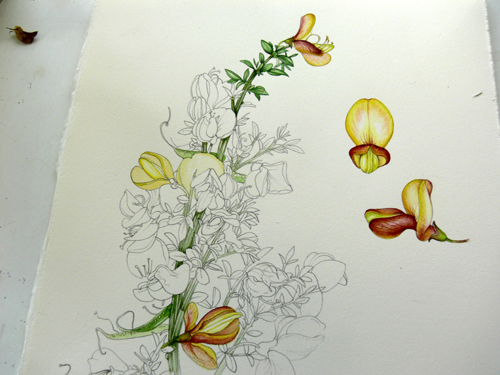
Finally, a study of the seed pod. I adore the way the tendrils and old parts of the flowering structure weave about the pod, so it’s a treat to draw this.
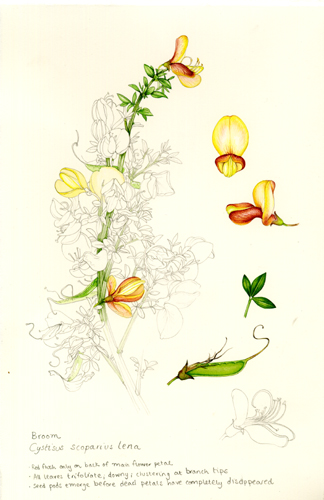
Adding written notes and finishing the Sketchbook study
I add a few written notes, and then it’s done. With the information on the page I could paint a complete broom plant of this type in detail, and have the confidence to know it’s as accurate as if I had the plant in front of me. It makes life really easy when a really tight deadline comes in; “draw a wild strawberry” they cry, “in two days.” And even though it’s January, I can do it with competence and confidence.
I love working this way, it’s really liberating to not feel the need to finish a piece of work to a highly polished state. It’s fascinating to look at other people’s botanical sketchbooks; the legendary Ehret’s sketchbooks are a a lesson in themselves; and there’s a lovely blog by Elizabeth Smith, detailing her Nature Art Journal in Southwest Florida which is well worth a look.
I’m also lucky that some publishers and individuals seem to like the way these sketcchbook illustrations look; and several have been privately comissioned. The sketchbook studies also illustrate the pages of The Hedgerow Handbook by Adele Nozedar, and there are vague rumours of a follow-up, which I’d adore to work on.
But for now, I’d better get back outside; the lilac’s in bloom but won’t be for long and then there are cornflowers that need painting…

